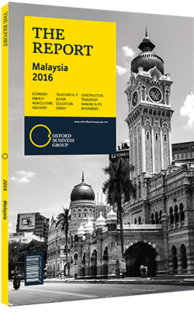Nor Shamsiah Mohd Yunus, Deputy Governor, Bank Negara Malaysia: Interview

Interview: Nor Shamsiah Mohd Yunus
How will Malaysia’s extension of Basel III capital adequacy requirements to financial holding companies (FHCs) affect banking groups?
NOR SHAMSIAH MOHD YUNUS: It has already prompted banking groups to begin considering their optimal future structure. For example, RHB Capital has announced that it will undergo a restructuring, deciding to merge RHB Capital and RHB Bank, with the latter to become the apex of the group and the company that will eventually be listed on the stock exchange.
Regardless of what your structure is, whether you have an FHC or a banking institution at the apex, it has to be a level playing field. The capital will still need to be adequate at the group level. We see that some financial institutions have begun introducing dividend re-investment programmes, where dividends are declared but shareholders plough their dividends back into ordinary shares. This results in the proactive management of capital. That has helped, and what is happening is that the buffers the banks have built over the years have provided them with the flexibility to deal with the more challenging environment that we are facing today. Intermediation, or ensuring that the banks continue to intermediate – which is their primary role – is very important. This ensures that our economy continues to grow. Banks have five years to implement the requirements, so there is plenty of time for adjustment, and we have provided a clear roadmap to see when each measure will be phased in.
What further financial reforms are needed to protect the banking sector from future risks?
YUNUS: Some of the bank’s immediate key policy priorities include the further strengthening of standards on corporate governance, credit and technology risk management; outsourcing; and enhancements to stress-testing approaches. On corporate governance standards, strengthened requirements are being proposed in areas of board composition, corporate culture, compensation practices and group oversight responsibilities. The key focus of credit risk standards is on improving the sophistication of credit risk measurement methods employed across the Malaysian banking industry. We need a continued and orderly alignment of the domestic regulatory framework to the extensive global regulatory reform agenda, so that the sector achieves greater long-term resilience without unintended dislocations. These include reforms relating to liquidity, capital, and recovery and resolution planning. Another priority area will be to promote fair, responsible and professional business conduct by financial service providers with a view to ensuring better protection for financial consumers, supported by a wide range of regulatory, supervisory and enforcement instruments.
In 2016 one major focus will be to assure the effective operationalisation of the financial ombudsman scheme, and rationalising and consolidating various standards on fair treatment of financial consumers. Malaysia has been admitted as a full member of the Financial Action Task Force in February 2016. This reflects Malaysia’s robust legal framework for combating money laundering and terrorism financing that is currently in place and the strong commitment demonstrated in addressing the gaps that were identified in the Mutual Evaluation exercise in 2015.
How is financial integration in ASEAN developing?
YUNUS:The model that ASEAN is pursuing is very different to that of the one pursued by Europe. A couple of years ago ASEAN states agreed that we would not have a single currency, nor will we have a trade union, but financial integration is something we’d like to pursue simply because we have abundant savings here, and we want to develop our financial market and have financial integration so that we can recycle the savings back into the region. ASEAN’s investment needs are substantial, estimated at around $8trn.
You have reached the limit of premium articles you can view for free.
Choose from the options below to purchase print or digital editions of our Reports. You can also purchase a website subscription giving you unlimited access to all of our Reports online for 12 months.
If you have already purchased this Report or have a website subscription, please login to continue.

